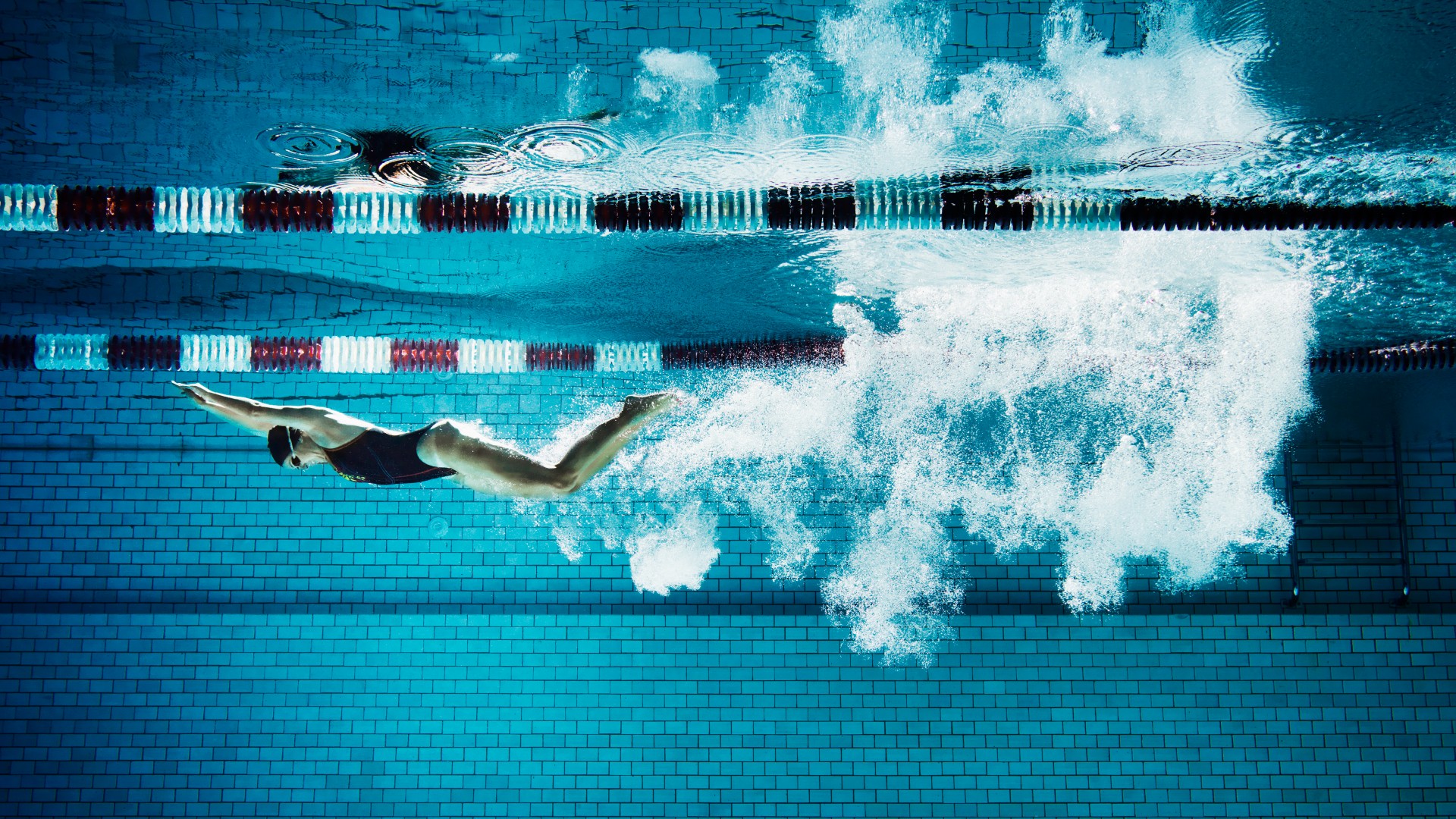What's the best swim stroke for burning calories?
From crawl to butterfly, the swim stroke you choose makes all the difference when it comes to burning calories

In the pool, not all strokes are created equal, and you might be wondering what's the best swim stroke for burning calories? Breaststroke, front crawl, back crawl and butterfly all have their unique advantages, work slightly different muscle groups and give your body specific challenges. But how many calories you burn can vary depending on which stroke you use plus your speed and technique.
While it’s true that each swimming stroke offers a different impact when it comes to calorie burn, it’s important to remember that you’ll only reap the maximum rewards if you’re executing the stroke correctly. A well executed backstroke (which burns the least amount of calories) is going to end up being more efficient when it comes to weight loss than a poorly executed butterfly (which burns the most calories) that sees you exiting the pool early.
We’ve spoken to the experts to help you decide which stroke to try when you next hit the water. And if you want to mix up your workout a bit, check out our guide to the best exercise machines to lose weight.
Does it matter which swim stroke I use?
It's easy to assume that, as long as you're putting in some effort, the swim stroke you favour doesn't make much difference when it comes to calorie burning. But it does — and it's all down to your technique.
For the Michael Phelps and Katie Ledeckys of the world, it's straight-forward: "In trained swimmers who are swimming at a steady pace, front crawl is the most economical stroke, followed by backstroke, butterfly and breaststroke," says Mitch Lomax, a reader in pulmonary exercise physiology at the University of Portsmouth. "So, a well-trained swimmer will burn fewer calories during front crawl than breaststroke if all other things are equal (distance, speed, time, etc)."

Mitch Lomax is a reader in pulmonary exercise physiology in the School of Sport, Health and Exercise Science at the University of Portsmouth. Lomax’s research focuses on breathing limitations during exercise and methods used to alleviate them, including respiratory muscle training and respiratory muscle warm-ups. Lomax has a special interest in swimming physiology and has undertaken research for Swim England, the IOC and FINA looking at recovery strategies for swimming performance in pool-based swimmers and safe lower water limits for open water swimming and triathlon.
What about us mere mortals? "In the example of a recreational swimmer who only ever swims breaststroke and keeps their head above the water, they might manage to swim in a straight line," says Lomax. "But if when swimming front crawl, they are unable to breathe properly, thrash their head from side-to-side and drag their legs through the water at an angle — they would find front crawl more taxing, and would burn more calories during front crawl than breaststroke because they are less economical." That might sound like a good thing, but there's a good reason to brush up on your technique if you want to burn more calories per swim.
- Related: Is swimming cardio?
Swimming speed matters for calorie burn
It's not super fun to thrash around the pool, and by working on improving your swim stroke you can get up some serious speed. "The faster you swim, the more calories you’ll burn," points out Lomax. "Your metabolism will also likely remain higher for longer after you stop swimming, contributing to the overall calorie burning effect of swimming."
Get the world’s most fascinating discoveries delivered straight to your inbox.
It's best to master a particular stroke (like front crawl) that you can sustain for a long period of time, as you'll be able to comfortably up the speed and length of your sessions. If you try something challenging like butterfly (which will burn the most amount of calories for the average swimmer) you might find that you can't sustain the exercise for longer periods of time.

The good news is that all swim strokes are whole-body forms of exercise and work a range of muscles, as well as raising your heart rate and calorie burn. Here's how they differ:
Breaststroke
This stroke works powerful leg muscles and doing it can help strengthen and tone your thighs, hamstrings, lower legs and upper back and triceps, as well as engaging your core.
Front crawl
Good technique and speed are key to getting the most out of front crawl. It's great for working your shoulders, biceps, triceps and your back.
Back crawl
Suffering from back pain? This is the stroke for you — plus you'll be challenging your hip flexibility, core strength and your butt. It's a lifesaver for desk-workers.
Butterfly
Again, this is a complex swim stroke that's worth perfecting for its calorie-burning abilities. In theory, it's the best stroke for calorie burning, but you'll need to nail the technique and speed to get the most out of the move. It's also great for upper body strength and conditioning and improving overall flexibility.
How can I burn more calories while swimming?

As well as speeding up and switching strokes, adding some resistance can help if your goal is burning calories. "If we increase the amount of drag we will have to work harder. One way is to wear drag suits — loose-fitting mesh shorts which provide additional resistance. There are also special drag socks, which disturb water-flow making you work harder," says Lomax.
Want to keep an eye on your calorie burn during a swim? Try picking up one of the best budget fitness trackers. Most models are waterproof now, so you can take them in the pool. While calorie estimates might not be 100% accurate, they will give you an overview of how hard you're working during a session — and which stroke is providing the biggest cardio challenge.
- Related: Does swimming build muscle?
Lizzy Dening is a freelance journalist, based in Peterborough, UK. She specialises in health and fitness content, as well as women's rights (particularly around sexual violence). She's previously been published in titles including The Guardian, Elle, Vogue, Marie Claire, Grazia, Women's Health, and the Independent.
She also writes a free monthly newsletter called Out Of Office, on Substack, which is aimed at self-employed women. She's an enthusiastic if often-injured runner, a sporadic poet and is interested in just about every new fitness trend going. Find her on Twitter @lizzydening



